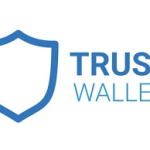Understanding Ethereum Wallets: A Comprehensive Guide to Digital Currency Management
—

**Introduction**
In the rapidly evolving landscape of digital currencies, Ethereum has emerged as one of the most significant players, primarily due to its capability to execute smart contracts and facilitate decentralized applications (dApps). An essential aspect of interacting with Ethereum, or any cryptocurrency, is the use of wallets. An Ethereum wallet is not merely a software program; it is a pivotal tool that enables users to manage, store, and transact Ether (ETH) and tokens on the Ethereum blockchain. This article delves deeply into the various aspects of Ethereum wallets, elucidating their functions, types, security measures, and their integral role in the cryptocurrency ecosystem.
**What is an Ethereum Wallet?**
At its core, an Ethereum wallet is a digital wallet that allows users to interact with the Ethereum blockchain. Unlike traditional wallets that hold physical currency, an Ethereum wallet does not store cryptocurrencies in a physical sense. Instead, it stores the public and private keys needed to access and manage assets on the blockchain. Public keys can be shared with others, allowing them to send Ether to the wallet, while private keys must be kept secret since they provide access to the wallet’s funds.
**Types of Ethereum Wallets**
Ethereum wallets can be broadly categorized into several types, each catering to different user needs and levels of security:
1. **Software Wallets**
– **Desktop Wallets**: These applications are downloaded and installed on a computer. They offer a higher level of security than online wallets but are still vulnerable to malware and hacking attempts. Examples include Exodus and Atomic Wallet.
– **Mobile Wallets**: These wallets run on smartphones, providing convenience for users who frequently transact. They utilize QR codes for easy payments. Popular choices include Trust Wallet and MetaMask’s mobile app.
– **Web Wallets**: Accessible through a web browser, these wallets are user-friendly but present a higher risk since they are at the mercy of the website’s security. Examples include MyEtherWallet (MEW) and Coinbase Wallet.
2. **Hardware Wallets**
– These are physical devices designed to securely store private keys offline. Hardware wallets are considered one of the safest options for long-term storage of cryptocurrencies. Leading examples include Ledger Nano S and Trezor.
3. **Paper Wallets**
– A paper wallet consists of a piece of paper with printed or written private and public keys. While immune to digital hacking, they are susceptible to physical damage or loss. Users must ensure proper measures to protect these wallets from being destroyed or lost.
4. **Custodial Wallets**
– These wallets are managed by third-party service providers, such as exchanges or wallet services, which take care of security and key management. While they simplify the user experience, they also introduce a risk of loss of funds if the third party faces issues.
5. **Non-Custodial Wallets**
– Users have complete control over their assets while managing the private keys themselves. This category includes most software and hardware wallets. Non-custodial wallets offer enhanced security and privacy but require users to be vigilant in safeguarding their private keys.
**How Do Ethereum Wallets Work?**
The functionality of Ethereum wallets hinges on key pairs: public keys and private keys. When a user creates a wallet, a unique public key is generated along with a corresponding private key. Here’s a simplified breakdown of how these wallets work:
– **Generating Keys**: The wallet software generates a public-private key pair through complex cryptographic algorithms, ensuring that every transaction is securely signed.
– **Address Creation**: The public key is hashed to create a wallet address, which is a shorter, alphanumeric string that can be shared with others for receiving funds.
– **Sending and Receiving Transactions**: When a user wants to send Ether or tokens, they input the recipient’s wallet address, specify the amount, and the wallet uses the private key to sign the transaction, proving ownership of the funds. Once broadcasted to the Ethereum network, miners confirm the transaction, ensuring its integrity before it is added to the blockchain.
– **Transaction History**: Each wallet also allows users to view their transaction history, displaying all incoming and outgoing transactions along with their confirmation status. Although the wallets do not store funds, they offer insights into the user’s account balance, recent transactions, and the status of pending transactions.
**Security Considerations for Ethereum Wallets**
While Ethereum wallets provide essential services for managing cryptocurrencies, securing one’s funds remains a paramount concern. Here are key considerations for ensuring wallet security:
1. **Private Key Management**: The most crucial aspect of wallet security is safeguarding the private key. If compromised, a user’s funds can be accessed and drained. Best practices include storing keys offline, using hardware wallets, and employing strong passwords for software wallets.
2. **Phishing Attacks**: Users should be wary of phishing attacks. Cybercriminals often attempt to trick users into revealing their private keys or seed phrases through deceptive messages or fake websites. Always double-check URLs and never enter sensitive information on unsolicited prompts.
3. **Backups**: Regularly backing up wallet information is essential to prevent loss due to device failure or theft. Wallet software often provides seed phrases or recovery phrases, which should be securely stored. Write these down and store them in a safe location.
4. **Multi-Signature Wallets**: For added security, particularly for businesses or group funds, multi-signature wallets require multiple private keys to authorize a transaction. This adds an extra layer of protection against unauthorized access.
5. **Software Updates**: Keeping wallet software and devices updated is crucial for protecting against vulnerabilities. Developers frequently release updates to patch security issues.
6. **Use of Strong Passwords**: Always use strong, unique passwords for wallet accounts and avoid reusing passwords across different platforms.
**Conclusion**
Ethereum wallets play an indispensable role in the cryptocurrency landscape, enabling users to manage their Ether and interact with the diverse array of applications on the Ethereum blockchain. Understanding the types of wallets and the underlying technology can empower users to make informed decisions about how to store and manage their digital assets securely.
As the crypto space continues to grow, so too will the technology surrounding Ethereum wallets. Staying updated on best practices for security and maintaining awareness of the latest developments in wallet technology is essential for anyone looking to navigate the complex world of cryptocurrencies confidently. By taking diligent steps to secure their digital assets, users can enjoy the myriad benefits of participating in the Ethereum ecosystem while safeguarding their investments against potential threats.
—
This article serves as a foundational guide to understanding Ethereum wallets, but continued learning and vigilance are vital for success in the dynamic cryptocurrency market.

